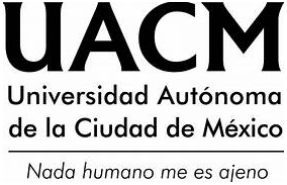Crisis in teaching the qualitative methodology
DOI:
https://doi.org/10.29092/uacm.v13i31.429Keywords:
Qualitative methodology, quantitative methodology, collection techniques mixed approach, epistemology, qualitative methodology teachingAbstract
The new methodological debates within social sciences aim at overcoming the antagonism between the quantitative and the qualitative characteristics and propose the mixed, or triangulation comprehensive approach; however, these proposals present mistakes in two specific directions: 1. There is still a lack of understanding of the epistemological origin of each one of these approaches, which involves giving a secondary range to qualitative characteristics when trying to integrate both methodologies, and 2. Considering the data collection techniques are inherently qualitative methods. It is considered that some of these mistakes are related to poor education that is made of qualitative methodology at postgraduate level.
Downloads
References
Archenti, N.; Piovani, J. I. (2007), “Los debates metodológicos con¬temporáneos”, en A. Marradi, N. Archenti y J. I. Piovani, Me¬todología de las ciencias sociales, Buenos Aires: Emecé. Artículo disponible en [https://es.scribd.com/doc/224760800/Archen¬ti-N-y-Piovani-J-Los-Debates-Metodologicos-Contempora¬neos], 12 de octubre de 2015.
Blanco-Peck, R. (2006), “Los enfoques metodológicos y la adminis¬tración pública moderna”. Artículo disponible en [https:// es.scribd.com/doc/179261275/Blanco-Peck-Richard-Los-Enfo¬ques-Metodologicos-y-la-Administracion-Publica-Moderna], 7 de octubre de 2015.
Bryman, A. (1988), “Capítulo 1- Introducción- y Capítulo 2”, en Quantity y Quality in Social Research, Londres: Routledge. Documento dis¬ponible en [www.catedras.fsoc.uba.ar/ginfestad/biblio/1.1.%20 Bryman.pdf], 15 de octubre de 2015.
Bryman, A. (2006), “Integrating Quantitative and Qualitative Research: How is it Done?”, en Qualitative Research, vol. 6, núm. 1, Lon¬dres/Thousand Oaks/Nueva Delhi: Sage, pp. 97-113. Artículo disponible en [http://studysites.sagepub.com/bjohnsonstudy/ articles/Bryman.pdf], 15 de octubre de 2015.
Gabrielian, V.; Yang, K.; Spice, S. (2008), “Qualitative Research Me¬thods”, en Kainfeng Yang y Gerald J. Miller (eds.), Handbook of Research Methods in Public Administration, United States of American: Taylor & Francis Group, pp. 141-168.
Lulo, J. (2002), “La vía hermenéutica: las ciencias sociales entre la epis¬temología y la ontología”, en Federico L. Schuster (comp.), Fi¬losofía y métodos de las ciencias sociales, Buenos Aires: Manantial, pp. 177-235.
Malinowski, B. (1975), Los argonautas del Pacífico Occidental, Barcelona: Península.
Markova, I. (1996), “En busca de las dimensiones epistemológicas de las representaciones sociales”, en Darío Páez y Amalio Blanco, La teoría sociocultural y la psicología social actual, Madrid: Fundación Infancia y Aprendizaje.
Morçöl, G.; Ivanova, N. (2009), “Methods Taught in Public Policy Programs: Are Quantitative Methods Still Prevalent?”, en Journal of Public Affairs Education, vol. 16, núm. 2, pp. 255-277. Artículo en línea disponible en [http://www.naspaa.org/jpaemessenger/Article/VOL16-2/16no2_09_MorIvan.pdf], 10 de octubre de 2015.
Organización de las Naciones Unidas para la Educación, la Ciencia y laCultura (Unesco) (2010), “Informe sobre las Ciencias Sociales en el mundo”. Documento disponible en [http://www.unesco. org/new/es/social-and-human-sciences/resources/reports/world-social-science-report-2010/], 12 de octubre de 2015.
Rodó, A. (1987), “El cuerpo ausente”, en Proposiciones 13, vol. 13, año 7, enero-abril, Santiago de Chile: Ediciones sur.
Savage, M. (2009), “Contemporary Sociology and the Challenge of Descriptive Assemblage”, en European Journal of Social Theory, vol. 12, núm. 1, febrero, pp. 155-174. Artículo disponible en [http://est.sagepub.com/content/12/1/155.full.pdf+html], 3 de noviembre de 2015.
Stone, D. (2002), Policy Paradox: The Art of Political Decision Making, Nueva York: W.W. Norton.
Turner, V. (2002), “Dramas sociales y metáforas rituales”, en Víctor Turner e Ingrid Geiste, Antropología del ritual, México: Instituto Nacional de Antropología e Historia (INAH), pp. 35-70.
Yanow, D. (2007), “Qualitative-Interpretive Methods in Policy Research”, en F. Fischer, G. J. Miller y M. S. Sidney (eds.), Handbook of Public Policy Analysis: Theory, Politics, and Methods, Boca Raton: CRC Press, pp. 405-416.
Published
Issue
Section
License
This Journal is licensed under Creative Commons Mexico 2.5. It is allowed to reproduce and disseminate the contents of the Journal for educational or research purposes, not for profit, as long as they are not mutilated and cite the source (Andamios, Revista de Investigación Social) and the author.
The copyright of the articles published in Andamios, Revista de Investigación Social are transferred by the author(s) to Universidad Autónoma de la Ciudad de México when the originals have been accepted, so that they are published and distributed both in the printed and electronic versions of the Journal. However, as established by law, the author(s) retains their moral rights. The author(s) will receive a form of assignment of copyright that they must to sign when their original has been accepted. In the case of collective articles, the signature of one of the authors will suffice, provided that the latter has obtained the consent of the others.
Authors may use the material of their article in other works or books published by themselves, with the condition of quoting Andamios as the original source of the texts.
The articles contained in this publication are the responsibility of their authors and do not compromise the official position of Andamios, Revista de Investigación Social of the Universidad Autónoma de la Ciudad de México.


